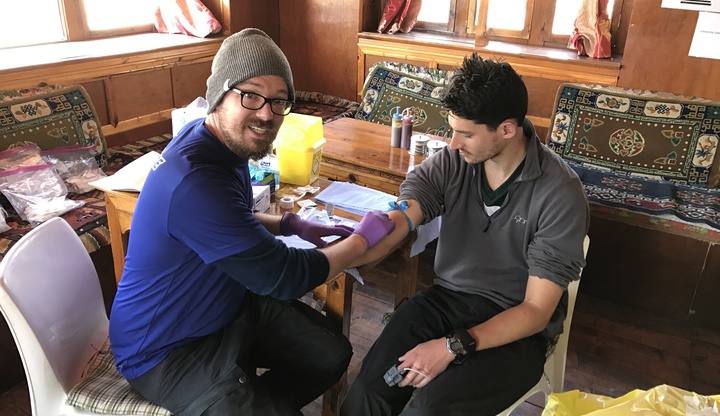Research in Nepal
The hum of a diesel generator drones on through the thin walls and fumes enter the room through poorly sealed windows. Ringing bells announce the arrival of yet another string of yaks, one of the main means of commerce. I can see my breath indoors as we slowly set the room, battling hypoxia. Welcome to Pheriche, Nepal; welcome to the front lines of high altitude clinical research.
Research in this arena is certainly not for the faint of heart. Simple things that can easily be taken for granted when working in a proper laboratory or clinic must be given a great deal of thought. Ambient room temperature, while a little unpleasant to work in also impacted the performance of our machines severely. At home, one could very easily just adjust the thermostat. Here in the Himalayas, we had to resort to extreme efforts in order to carry our research. For starters, we slept with the blood analysis machines in our sleeping bags to maintain a warmer temperature. Once in the lab, we used water bottles filled with hot water next to our machines to help maintain the temperature. A stove fuel by dried yak scat sporadically provided a bit of warmth in the room.
The difficulties of research at 4200 meters did not end with our blood analysis machines. In the early morning light, we drew blood with the aid of a head mounted flashlight. Our ultrasound machine was powered by an old, temperamental diesel generator. The power cord from the generator was passed through a window that was left ajar. Ultrasounds were performed in a cramped and dimly lit room.
In order to keep fuel costs down for the generator, it was critical to keep a steady stream of research participants in line to have their echocardiogram. The coordination of the research participants was orchestrated by our colleagues from the UK, making the process as streamlined as it possibly could be.
In order to conduct successful clinical research in such an adverse environment, every member of the research team needed to be quick to improvise solutions and adapt to the obstacles that occurred. The process as a whole was difficult at times. The outcome, however, was certainly rewarding.





